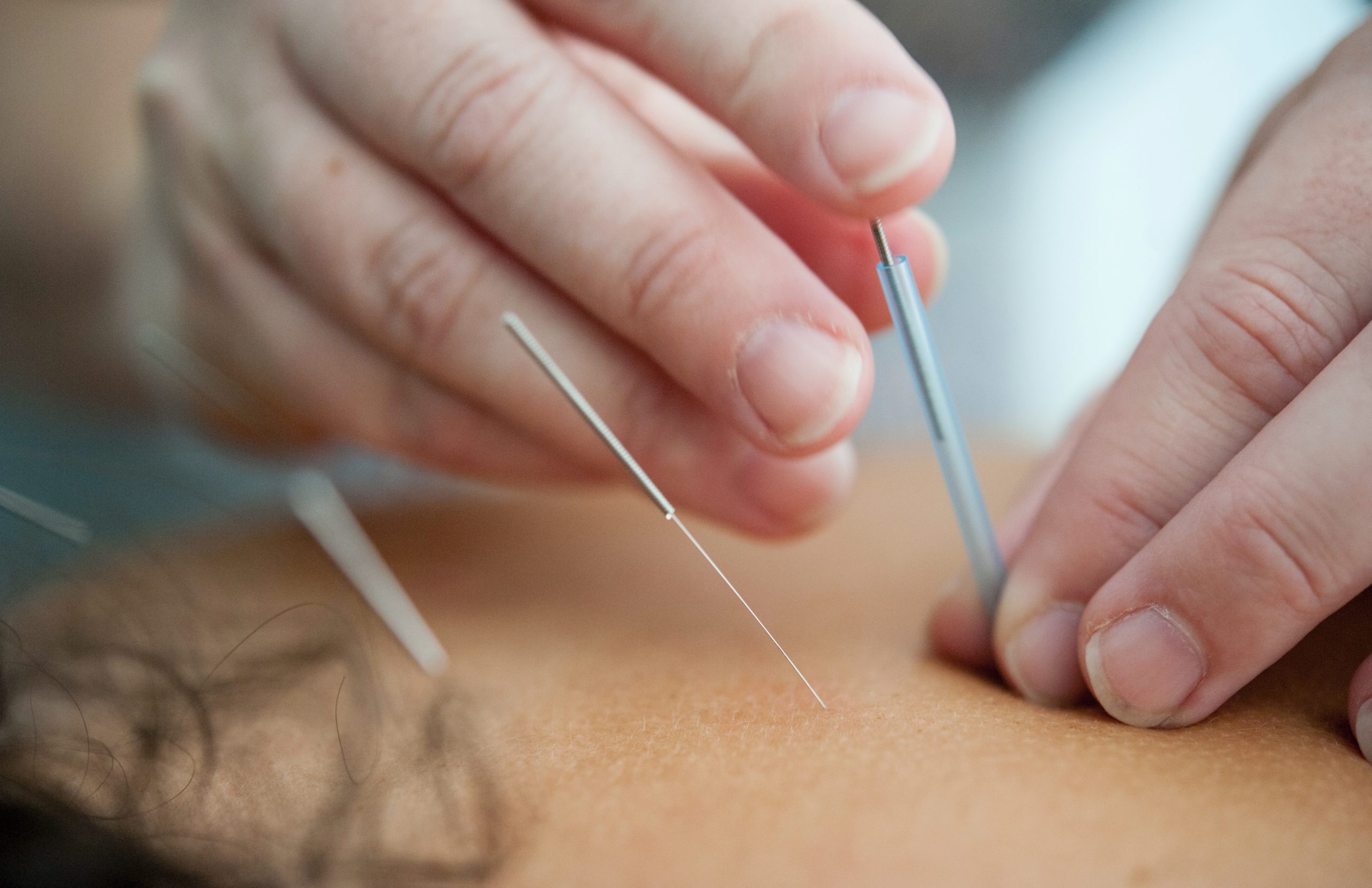Acupuncture treatment has become increasingly popular over the past few decades, as people look for alternatives to conventional Western medicine. As more and more people flock to holistic medical clinics in order to ease their pain and improve their health, it might be worth asking: What is acupuncture? Where did it come from and how does it work?
What is Acupuncture?
An acupuncturist inserts thin needles into specific points on the body in the hopes of stimulating something called qi (pronounced “chi”). In ancient Chinese medicine, qi is the “life force” or energy that flows through certain channels called “meridians.”
When your qi gets blocked or thrown off balance, your health suffers. By freeing up key points along the meridians, acupuncture redirects the energy and allows it to flow more freely through the body, thereby offering relief from a number of ailments, ranging from low back pain to high blood pressure.
Where does acupuncture come from?
Acupuncture is an ancient medical technique rooted in traditional Chinese medicine. Some claim it was derived from the philosophy of Taoism over 2,500 years ago.1 Other historians believe it might have been one of the first medical therapies developed by Chinese doctors. Much of the credit goes to three legendary figures—Fu Xi, Shen Nong, and Huang Di—who founded Chinese medicine by pioneering techniques such as the use of needles for healing.2
Regardless of its origins, acupuncture quickly spread to nearby areas. Within a few centuries, it had become common in what are now Vietnam, Korea, and Japan. As it passed from generation to generation and became assimilated into different cultures, acupuncture gradually evolved into the therapeutic treatment used throughout the world today.
Why is Acupuncture So Popular?
Over the centuries, many Westerners have written about their experience with acupuncture, which they encountered on their travels through Asia. Despite this the practice didn’t gain widespread acceptance until the 1970s when the general public started catching on to the benefits of this ancient healing technique.
As usual, California led the way, being one of the first states to legalize the licensed practice of acupuncture in 1975.3 Since then, the treatment has become more popular throughout the United States. In 1997, more than one million people received acupuncture treatment and, by 2007, that number had tripled, reaching more than three million people.1
Today, acupuncture is accepted throughout the country as a viable form of alternative medicine, and the National Center for Complementary and Integrative Health (NCCIH) considers it to be part of a broader range of therapies known as Traditional Chinese Medicine (TCM), which also includes moxibustion, tai chi, and qi gong.
What’s Wrong With Modern Medicine?
Why would anyone rely on ancient therapies, given the miracles of modern science? Simple. Conventional medical care is great at some things, but it fails in other areas. Despite major improvements, doctors and researchers admit that they still face huge knowledge and skill gaps.
For one, modern medicine is reactive. It treats diseases after they occur. Although more primary care physicians are turning their attention to preventative medicine, our healthcare system is still based on a model that prioritizes treatment after the fact.
Modern healthcare is also highly fractured. Physicians treat each part of the body as if it were a separate “system,” rather than an integrated whole. As a result, patients in search of an accurate diagnosis have to visit a number of specialists who increasingly limit the scope of their practice to specific disorders, organs, or systems. Cardiologists treat the heart. Neurologists treat the brain. Gynecologists treat the female reproductive system. Oncologists treat cancer.
Such splintering ignores the nature of the body, which is a highly complex, highly interdependent organism, rather than a disconnected patchwork of organs and systems. The result? Since few patients have access to truly coordinated care, serious conditions often get overlooked or misdiagnosed.
Filling in the Gaps of Our Fractured Healthcare System
By contrast, acupuncture is preventative and holistic. Although people do go to acupuncturists with specific complaints, the goal is not merely to alleviate specific conditions, but to improve overall health and ward off disease.
According to ancient wisdom, the key to health is the balance between the competing forces of yin and yang. By restoring equilibrium to the entire body, acupuncture facilitates the healing process. Instead of focusing on one system or condition, an acupuncturist examines the entire body, asking how an obstruction in one area may give rise to problems in other areas.
The best part is that acupuncture is extremely safe, so long as patients seek care from a licensed practitioner. In fact, it’s far safer than many conventional treatments, which are often indiscriminate in their effects. Antibiotics, for example, kill both good and bad bacteria. Chemotherapy destroys both good and bad cells. Anti-parasitical drugs wreak havoc on the liver and kidneys.
Indeed, far too many healthcare providers rely almost exclusively on pharmaceutical products to control symptoms, without ever addressing underlying problems. It’s a bit like dousing a gas inferno without bothering to turn off the gas that’s feeding the fire.
Instead of medicating the symptoms, acupuncturists work hard to discover the root cause and encourage the body to heal itself. In other words, it’s a holistic, non-destructive therapy.
The Meeting of Two Worlds
That doesn’t mean acupuncture can replace modern medical care. It can’t. Used in conjunction with conventional treatments, however, it can help the body fight back against disease without causing any additional harm or side effects.
Fortunately, most healthcare professionals no longer pit modern Western treatments against ancient Chinese therapy. In fact, an increasing number of practitioners are turning to ancient techniques to supplement conventional care, and many hospitals, including the nation’s leading medical research centers, offer acupuncture alongside conventional treatments.
In short, more people are realizing that modern treatments and ancient therapies are not enemies, but allies. Together, the two forms of medicine can help patients live happier, healthier lives.

Acupuncture Treatment for Pain
Most people seek out acupuncture therapy to manage pain. A growing body of scientific research validates that decision, showing that acupuncture for back pain, neck pain, and knee pain is not only safe but effective.4
The traditional Chinese practice is particularly helpful for treating chronic pain that no longer responds to traditional medical treatment. For patients that might otherwise have to take increasingly larger doses of narcotic painkillers, acupuncture can significantly improve quality of life and reduce the risk of long-term dependency.
While a patient’s attitude toward treatment may affect the outcome (the same is true with regards to almost any medical treatment), research suggests that the pain-relieving effects of acupuncture cannot be reduced to a mere placebo effect, but, rather, offers real benefits that can’t be provided by other, more conventional treatments.
Acupuncture Treatment for the Whole Body
Beyond pain management, many people seek out acupuncture for fertility, acupuncture for weight loss, and acupuncture for whole-body health. Treatment works by addressing three key areas—digestion, hormone balance, and inflammation related to the body’s immune response.
Done right, acupuncture therapy can help relieve a number of health-related conditions, including:
- Headaches and migraines
- Digestive problems
- Anxiety
- Depression
- Stress
- Hormone imbalances
- Thyroid conditions
- Menstrual problems
- Infertility
- Low-T (testosterone and libido)
- Weight abnormalities
- Heart palpitations
- Blood pressure
It’s important to remember that since acupuncture is a holistic treatment, its effects aren’t limited to specific conditions. Instead, it helps people deal with a broad range of disorders that may be caused or exacerbated by energy imbalances.
What Kind of Acupuncturist Should You See?
An increasing number of health professionals now practice acupuncture, but not all have the same depth of knowledge or skill level. Most obtain basic certifications, which require a few hundred hours of coursework and a basic familiarity with pain management techniques.
TCM Practitioners, on the other hand, undergo a far more rigorous training routine that involves 2,500 hours of training and in-depth knowledge about a range of complex health conditions. In other words, TCM practitioners practice truly holistic therapy.
What does it mean for residents of New York? If you’re searching for “acupuncture near me,” look for fully certified TCM physicians, such as Dr. David Pollack and Dr. Juliana Gorowitz of the Pollack Wellness Institute, both leaders in the field of holistic medicine.
Sources:

Functional Medicine is All About You.
Wellness is not just the absence of disease, but a daily feeling of health and well-being. Functional medicine provides the body with balance and strength from the inside out by healing the root causes of disease to foster your true vitality.
If you’re looking for a top acupuncturist, call Pollack Wellness or schedule a 15-minute discovery call today to learn how our functional medicine doctors and holistic services can help you.


